Image Archive

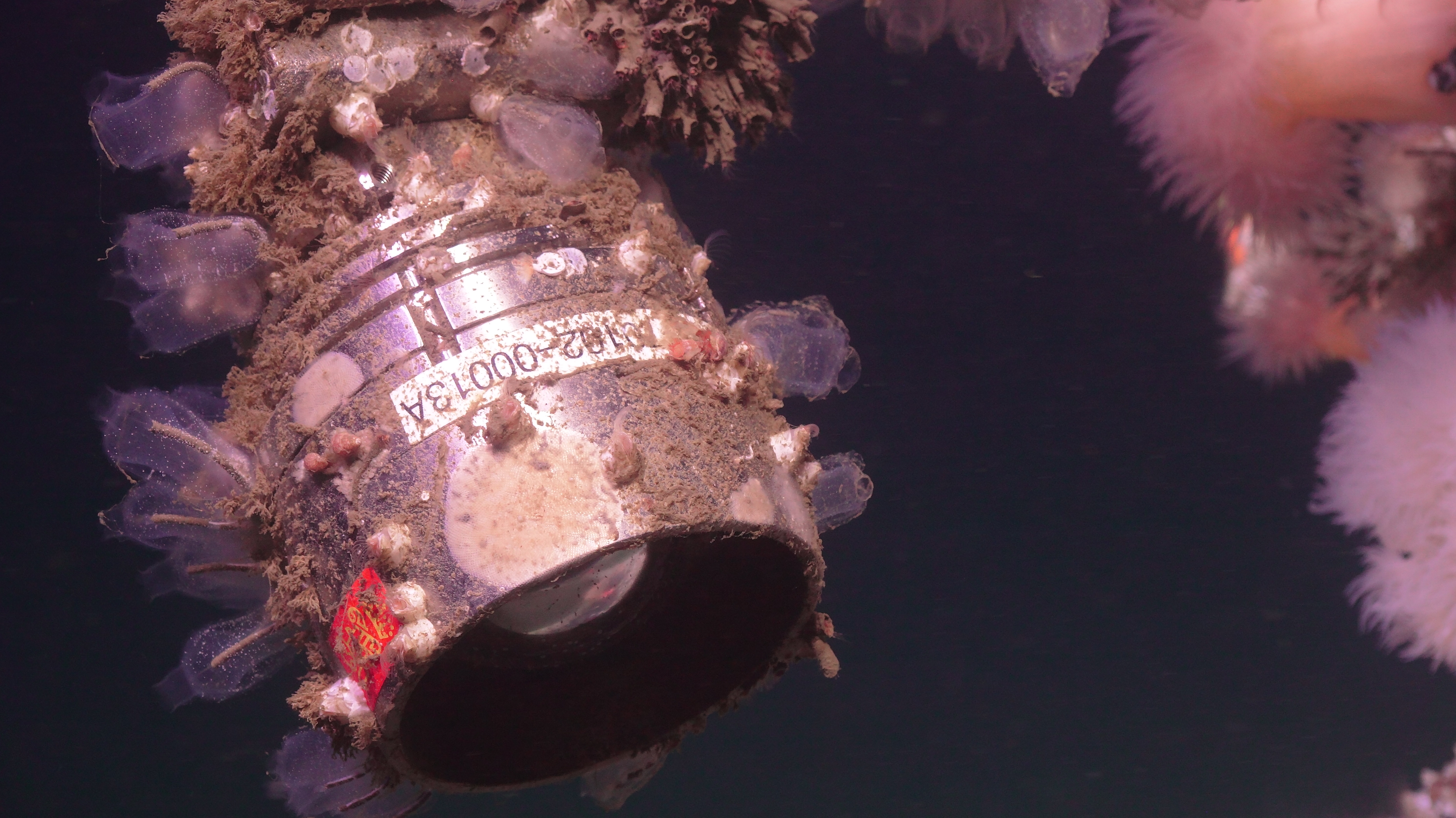



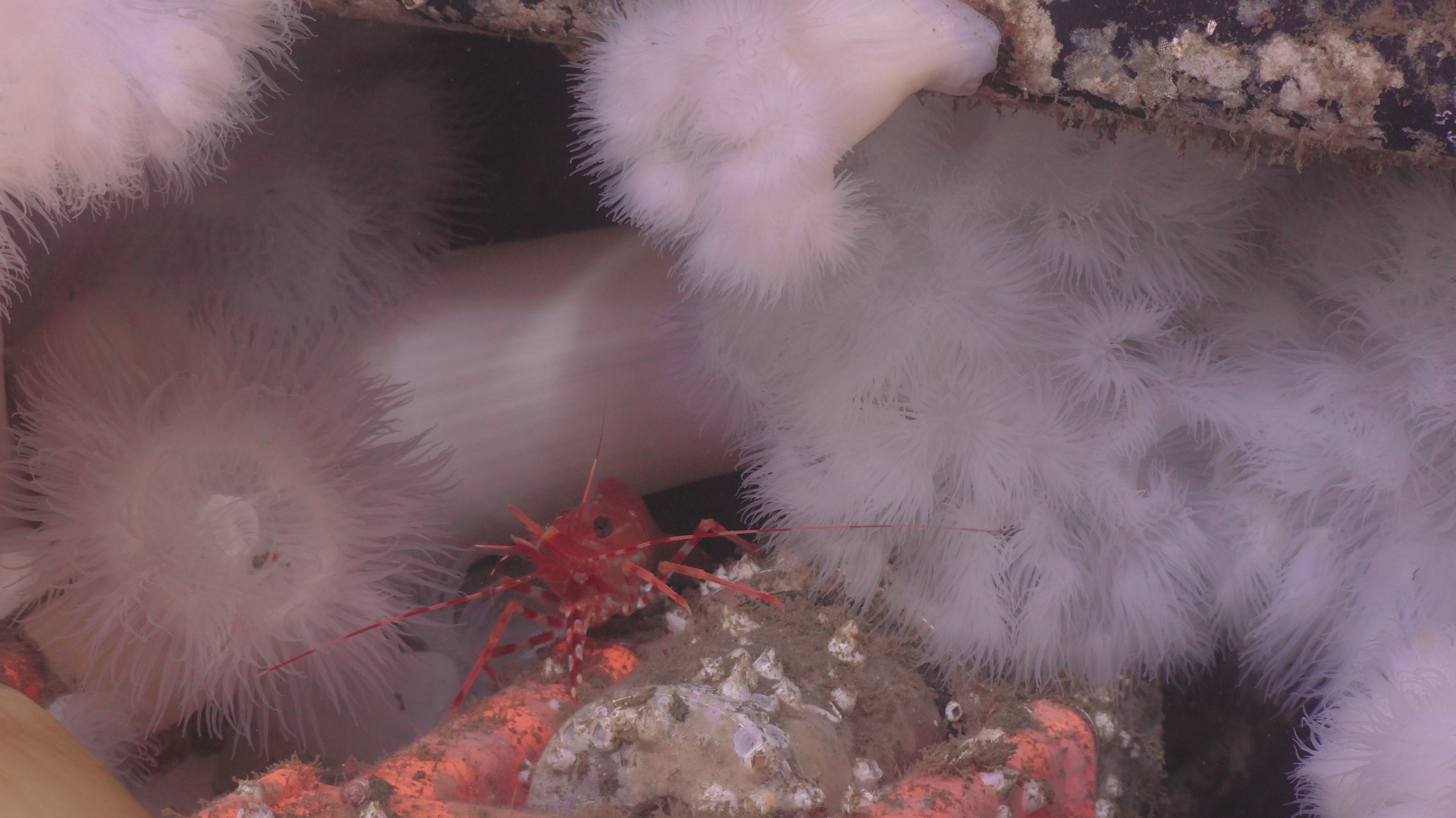


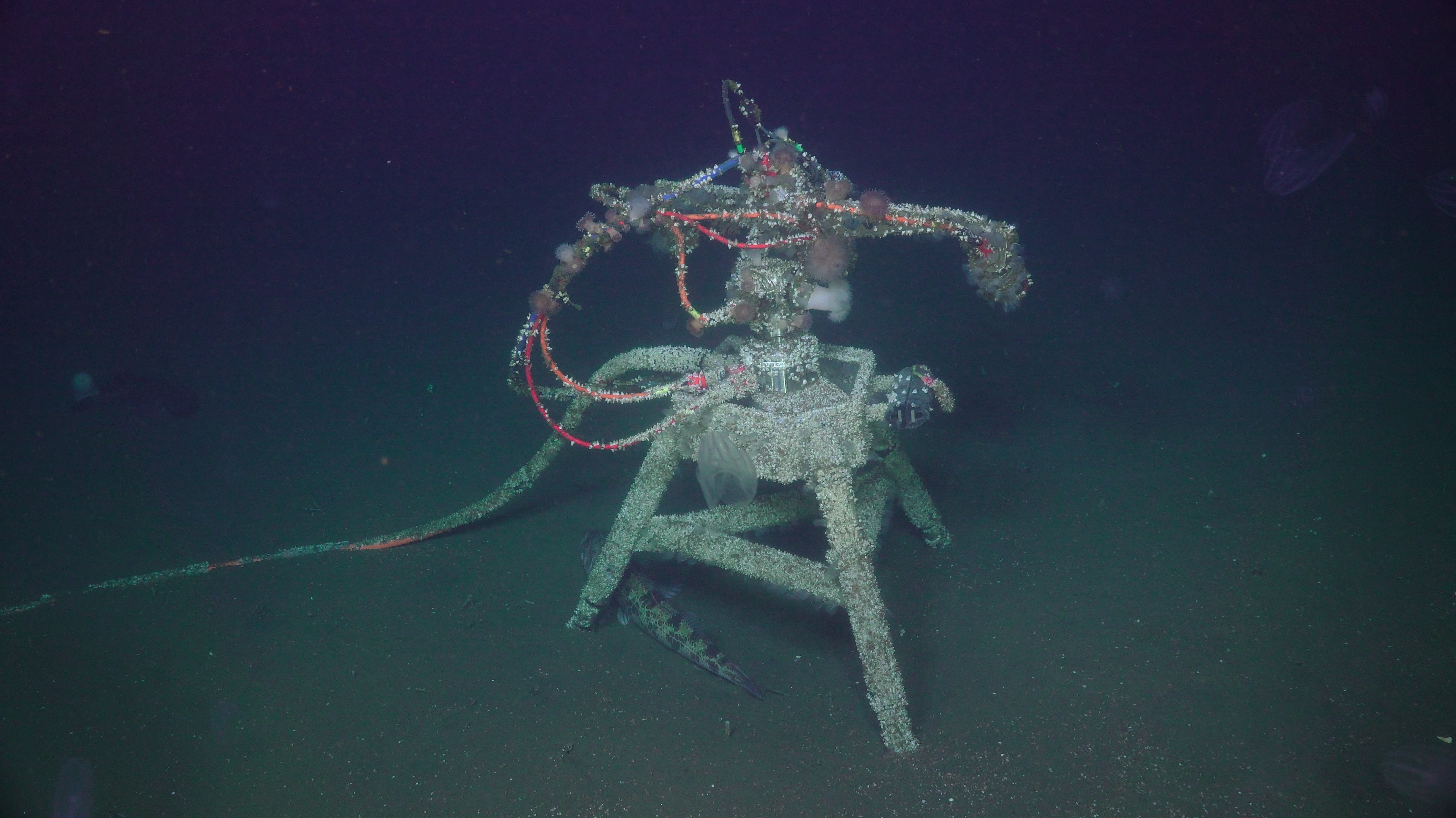







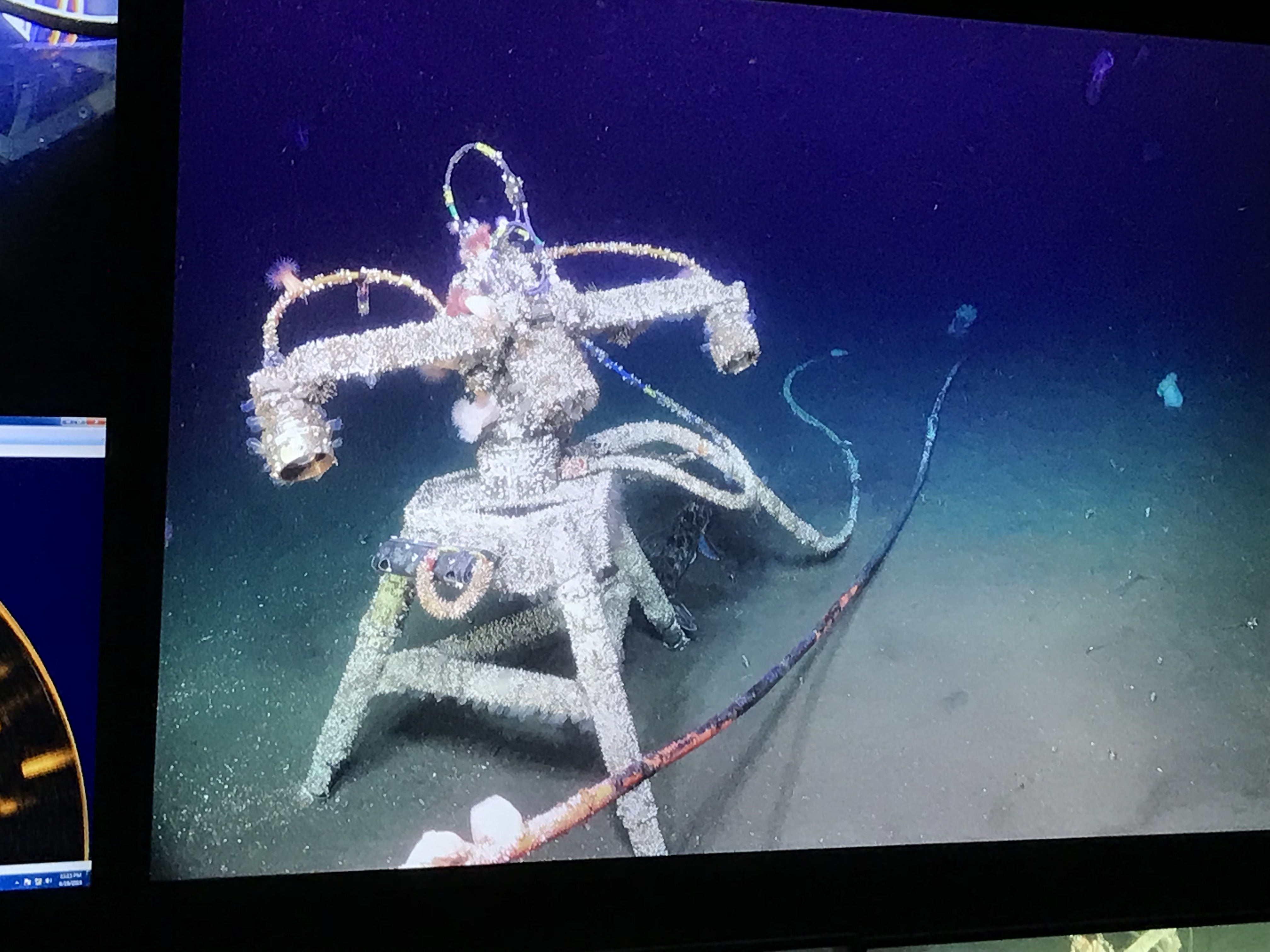









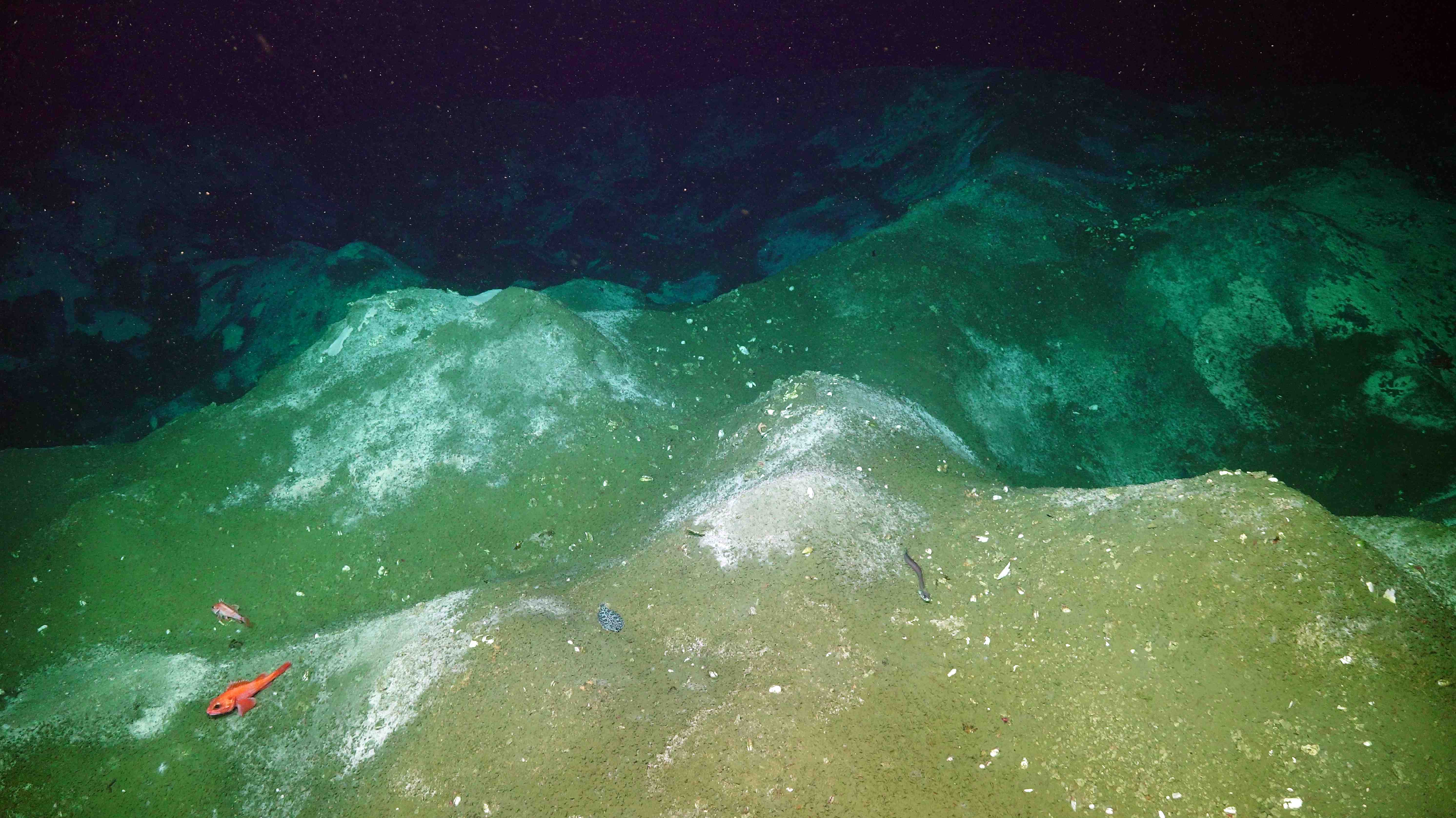
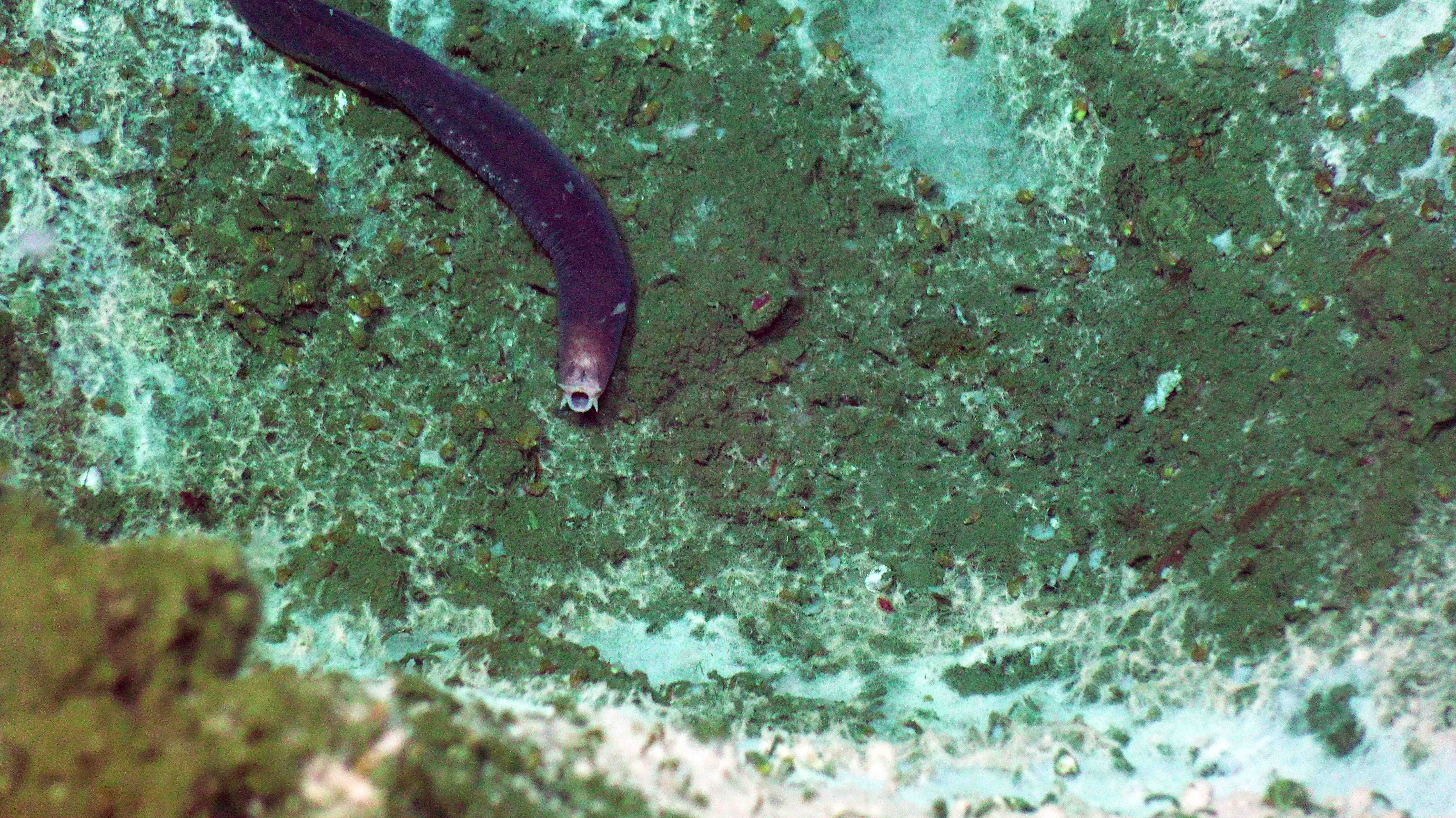

A tanner crab next to bacterial mat at Southern Hydrate Ridge (780m). Credit: UW/NSF-OOI/WHOI, V19

Tunicates (aka sea squirts) covering the lamp of the Oregon Shelf digital still camera. Tunicates are chordates that start life as a swimming, fish-like animal and then settle on a surface and become sessile (attached) organisms that filter food out of the water flowing by. Photo Credit: UW/NSF-OOI/WHOI, V19

Different shapes and sizes of anemones covering the upper surface of the Oregon Shelf junction box. Photo Credit: UW/NSF-OOI/WHOI, V19

Close-up video of the Metridium anemones covering the upper surface of Oregon Shelf junction box. Photo Credit: UW/NSF-OOI/WHOI, V19

The Jason pilots carefully use a manipulator to cover the open socket of the Oregon Shelf junction box with a protective 'dummy plug' after disconnecting the digital still camera. Anemones cover most of the rest of the surface of the platform. Photo Credit: UW/NSF-OOI/WHOI, V19

A possessive shrimp colonized the junction box plug that we needed to disconnect to recover the Oregon Shelf digital still camera. The Jason ROV won the battle. Photo Credit: UW/NSF-OOI/WHOI, V19

Anemones flourish on the hard surfaces of the Oregon Shelf junction box, luckily leaving a gap wide enough for the orange handle of the power plug needed to disconnect the digital still camera. Photo Credit: UW/NSF-OOI/WHOI, V19

There are so many anemones covering the Oregon Shelf (80m) junction box that it can be hard to see the frame. Photo Credit: UW/NSF-OOI/WHOI, V19

A rear view of the anemones, barnacles, and tunicates covering the Oregon Shelf digital camera after a one year deployment. A lingcod fish is hanging out beneath the tripod, and a large number of ctenophores (comb jellies) were also seen at the site. Photo Credit: UW/NSF-OOI/WHOI, V19

The Oregon Shelf digital still camera, covered in barnacles, anemones, and tunicates (sea squirts), and sheltering a large lingcod, following a one-year deployment. Photo Credit: UW/NSF-OOI/WHOI, V19

Barnacles, anemones, and tunicates encrust the Oregon Shelf digital still camera tripod, with a lingcod hiding beneath. Credit: UW/NSF-OOI/WHOI, V19.

Fish school around the Oregon Offshore hydrophone (underwater microphone) tripod as it is prepared for recovery in 2019. Photo Credit: UW/NSF-OOI/WHOI, V19

A black cod fish swimming away from the Oregon Offshore BEP as it is prepared for recovery in 2019. Photo Credit: UW/NSF-OOI/WHOI, V19.

Zoroasterid (top left) and Solaster (center bottom) sea stars and a flatfish (top right) at the Oregon Offshore site. Photo Credit: UW/NSF-OOI/WHOI, V19

A sea pen (a colonial, stalked cnidarian, related to jellyfish) at Slope Base. Photo Credit: UW/NSF-OOI/WHOI, V19

A fringed sea cucumber next to the Slope Base junction box in 2019. Photo Credit: UW/NSF-OOI/WHOI, V19.

Barnacles, tunicates, and anemones biofouling the digital still camera at the Oregon Shelf site. Photo Credit: M. Vardaro, UW, V19

Close-up shot of white anemones on top of Oregon Shelf junction box MJ01C. Photo Credit: M. Vardaro, UW, V19

Close-up shot of shrimp hiding among the anemones encrusting Oregon Shelf junction box MJ01C. Photo Credit: M. Vardaro, UW, V19

A shrimp hiding among the anemones biofouling junction box MJ01C at the Oregon Shelf Site, deployed since 2014. Photo Credit: M. Vardaro, UW, V19

Deep-sea octopus (Muusoctopus sp.) at Axial Base 2600 m; Photo Credit: UW/NSF-OOI/WHOI, V19

A pom-pom anemone at Axial Base, moving around the legs of the HPIES instrument. Photo Credit: UW/NSF-OOI/WHOI; V19

A Graneledone octopus peeking at Jason around the side of the Axial Base HPIES instrument. Photo Credit: UW/NSF-OOI/WHOI; V19

A rattail fish swimming near the Axial Base junction boxes during a CTD deployment. Photo credit: UW/NSF-OOI/WHOI; V19

Organisms colonize the outer walls of the 16 m-tall hydrothermal edifice called El Guapo. The community structure changes with height above seafloor. Here, limpets, red scale worms and blue protists (ciliates) colonize the outer sulfide walls of the structure. Credit: UW/NSF-OOI/WHOI, V18.

Near the summit of the ~16 m-tall El Guapo chimney, sulfide worms, and tubeworms colonize the younger part of the new sulfide growth. Credit: UW/NSF-OOI/WHOI, V18.

Once again the Smokey Caverns (or Taverns as it is also known) has changed remarkably since we visited it with Jason last year. The area is significantly more rugged, marked by large hummocks. An eelpout, sole, clams and orange rock fish dot the landscape. Credit: UW/NSF-OOI/WHOI, V18.

A hagfish with mouth wide open slithers around the Southern Hydrate Ridge methane seep site. Credit: UW/NSF-OOI/WHOI, V18.
- Anemone
- Animal
- Arthropod
- ASHES
- Axial
- Axial Base
- Axial Biology
- Axial Caldera
- Bacteria
- Basalt Lava
- BEP
- Biofouling
- biolgoy
- Biology
- Camds
- Camera
- Camhd
- Central Caldera
- Ciliates
- Cnidaria
- Coastal Biology
- Crab
- Deep Profiler Mooring
- Dive Highlights
- Eastern Caldera
- Echinoderms
- Endurance Array
- Engineering Team
- ENLIGHTEN 10
- Exploratorium
- Fish
- Geology
- HD Camera
- HPIES
- Hydrate Ridge
- Hydrates
- Hydrophone
- Hydrothermal Vents
- Illustration
- Inshore 80 Meters
- Instrument
- International District
- J-BOX
- Jason
- Jellyfish
- Junction Box
- K12
- Lava
- Mollusk
- Moorings
- Nodes
- Nudibranch
- Octopus
- OOI
- Oregon Offshore
- Oregon Offshore 600 m
- Oregon Shelf
- Oregon Slope Base
- People
- PN1B
- PN1D
- Polychaetes
- PPSDN
- Primary Node
- RASFL
- ROCLS
- ROPOS
- ROPOS Dives
- ROV Team
- RV Revelle
- RV Sikuliaq
- RV Thompson
- Salp
- Sample
- SC13
- Science Team
- Sea Cucumber
- Sea Star
- Sea Urchin
- Seafloor
- Seismometer
- Sensors
- Shallow Profiler Mooring
- Shark
- Shipboard
- Shore Station
- Slope Base
- Smoker
- Soft Coral
- Southern Hydrate Ridge
- Sponge
- Squid
- Students
- Students & Guest Participants
- Tmpsf
- Tubeworms
- VISIONS 11 Leg 1
- VISIONS 11 Leg 2
- VISIONS 11 Viewers
- VISIONS 13
- VISIONS 14
- VISIONS 15
- VISIONS 16
- VISIONS 17
- VISIONS 18
- VISIONS 20
- VISIONS 22
- VISIONS 23
- Visualization
